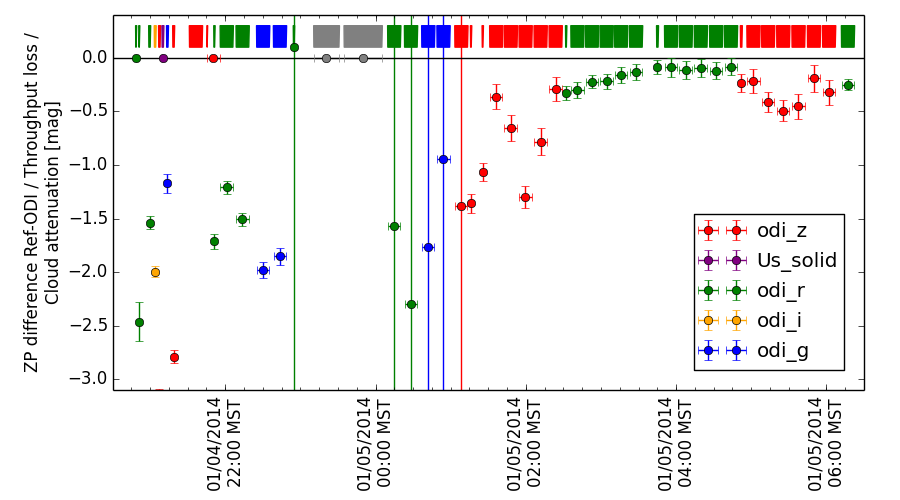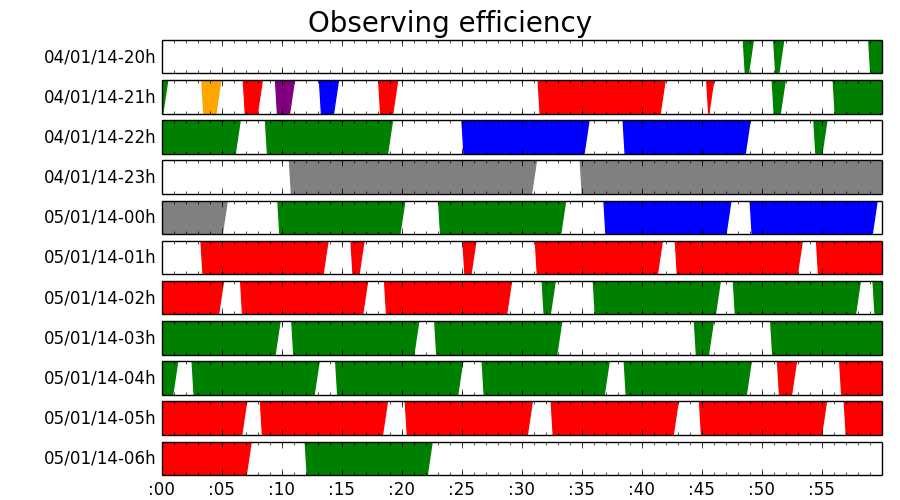New plots allow to judge observing conditions and efficiency
During my last WIYN run (which was my first one done remotely), I came up with two new tools that allow me or the observer in general to better judge the sky-quality as well as observing efficiency. Both scripts use the automatically reduced ODI frames (see the podi_SAMPListener for details on that) and create plots that show what’s going on.
Atmospheric transparency and/or detector throughput
The first plot shows the photometric zeropoint, or rather the difference between the photometric zeropoint of the data minus the theoretically expected zeropoint, for each filter over the span of the night. In the night shown above, the night started with clouds that moved out somewhere around 1am MST. Cloudy patches are clearly discernible in the plot as low values in the left half of the plot. The second half of the night was mostly clear, although not photometric (there was still some up and down in the guide star brightness). The top row of the plot shows individual exposures, color coded by filter. Filter for which no photometric calibration was possible are shown in grey – in the above example the grey exposures are 2 long H-alpha exposures with 1200s and 1800s.
Observing efficiency:
The second script shows each individual exposure on a time-line, color-coded by filter as in the previous plot. I find this plot a good overview on how the observing time is spent. Note, however, that the plot currently only includes science frames, i.e. pre-images for guide-star selection and focus sequences are currently not shown. Overheads connected to these exposures (initialization, cleans, read-out, etc), however, are displayed in the plot as the small triangular ramps at the beginning and end of each frame.
Also some of the larger gaps are a little misleading, as telescope slews, rotator unwraps, etc are not shown yet. All the necessary information is recorded at WIYN, however, so ideally I’d like to add that information to the plot at some point in the future.

